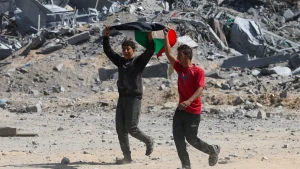
One week into the ceasefire, Gaza is quieter — but not safe, not fed, and not remotely okay. The politics are fluid, the aid picture is messy, and the clock on famine keeps ticking. Here’s where things stand — and what it will actually take to save lives.
The October ceasefire — brokered with heavy US involvement — has mostly held so far, even as both sides trade accusations of violations and argue over the return of the bodies of Israeli captives. The truce stopped two years of continuous war but remains fragile; Israeli officials have warned of renewed operations if terms aren’t met, and President Trump has publicly threatened further action if the hostage-remains provisions stall.
At the center of the post-ceasefire conversation is the administration’s twenty-point plan for Gaza. Public write-ups and the published deal text describe a framework that:
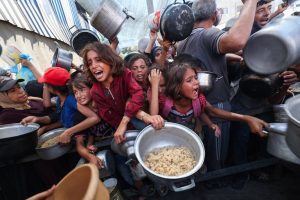
(a) rules out Israeli annexation or permanent occupation and rejects forced displacement of Palestinians;
(b) phases releases of hostages and remains;
(c) scales up “full” humanitarian access approximating earlier peaks (often shorthanded as 600 trucks/day);
(d) ties governance reform and security guarantees to reconstruction funds;
(e) leans on international monitoring, including existing UN mechanisms, to keep both aid and security on a tighter leash.
Analysts call it ambitious, with success hinging on access, enforcement, and whether Gaza can be stabilized without deep re-militarization.
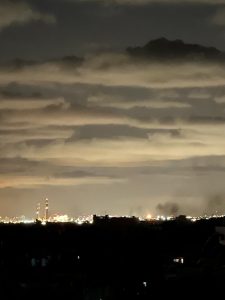
On the ground, that ambition collides with the map. Large swaths of northern Gaza — where hunger is worst — remain hard to reach due to rubble, UXO, and ongoing military control along key arteries. Even supporters of the deal concede its “aid at scale” promise will falter without more open crossings and predictable clearances.
By late summer, Gaza had crossed a historic threshold: famine was formally assessed, with IPC partners warning more governorates would tip into catastrophic hunger without an immediate change in access. Children were already dying of malnutrition and related diseases.
Human rights investigators and UN bodies had also escalated their legal assessments. The UN Independent International Commission of Inquiry concluded in September that Israeli authorities are committing genocide in Gaza — citing mass civilian killings, the destruction of life-sustaining infrastructure, and the obstruction of relief — while noting that judicial determinations ultimately lie with competent courts. The commission’s legal analysis and related filings underpin much of the debate now shaping accountability and the ceasefire’s design.
Separately, Human Rights Watch has since December 2023 documented the use of starvation as a method of warfare, a war crime under IHL. The UN human rights office later condemned the “weaponisation” of food access in Gaza. Together, these records matter because they set red lines for any future aid architecture: access can’t be conditional or politicized without courting fresh violations.
All this was visible in the numbers: OCHA tracked sharp drops in cleared consignments through mid-September; even approved cargo piled up outside Gaza. Bakers ran out of flour and fuel. Clean water collapsed. When the guns fell quiet on October 10, famine didn’t end — it just became a little easier to see.
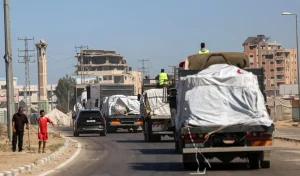
Trucks carrying aid provided by the World Food Programme drive on a road in Deir el-Balah, Gaza Strip, October 16, 2025
(Majdi Fathi/NurPhoto / Reuters)
Since the truce, WFP says ~560 tonnes of food have been getting in daily — better than during peak fighting, but still far below needs and often not reaching the north. Distribution points remain sparse, roads are cratered, and the crossings schedule is volatile. UN officials emphasize that thousands of truckloads per week, not hundreds, are required to reverse famine.
OCHA reports WASH partners shifted fleets north after Oct 10, delivering roughly 2,980 m³/day to hundreds of collection points. Some desalination capacity has restarted or expanded post-truce, but access remains uneven and contamination risks persist.
WHO warns infectious diseases are spiraling, with only a fraction of hospitals even partially functional; lack of fuel and supplies keeps neonatal and malnutrition wards on a knife-edge. ICRC and the Red Cross/Red Crescent network are pushing medical cargoes, forensic support for dignified management of remains, and ER-adjacent services — yet safe, repeated access to key facilities is still the gating factor.
Despite political headwinds, UNRWA continues to anchor mass assistance and shelter. Its latest situation updates describe stockpiles poised to enter and limited restarts of bakeries, clinics, and distributions — but warn that northern corridors remain largely blocked.
Ahmed Bayram, spokesperson for the Norwegian Refugee Council, captures the uneasy mood:
“The ceasefire is the right first step, but it won’t in itself reverse the deadly famine and the large-scale devastation across Gaza. My colleagues on the ground talk about very nervy times. People are in a state of disbelief, some worry that the fragile pause won’t last.
We want this ceasefire to last so that humanitarian aid can gush into Gaza in unlimited, unimpeded quantities. There are over 134,000 tonnes of food waiting across five neighboring regions, while over 55,000 children face acute malnutrition, or in other words, they face death if not treated immediately. The Norwegian Refugee Council has enough aid to fill up over 200 trucks, but we are yet to receive approvals to bring much-needed tents and cleaning items. In the meantime, we continue to provide clean drinking water to thousands of people every day.
Israel has controlled aid entry for two years. We want to see that change. We want all seven aid crossings to open so humanitarians can bring in the food, fuel, and medicine needed. The international community must authorise independent monitors under UN2720, or third-party observers, including the US and other partner governments, to oversee all crossings. Their role would be to monitor the flow of aid and verify the integrity of consignments, strengthening transparency and trust. Any monitoring presence must operate strictly under a humanitarian mandate, not a military or political one, to preserve neutrality and impartiality.
Gaza needs rebuilding. But it’s human life that must be rebuilt first. After two years of unrelenting bombardment, Israel’s attacks have left almost every aspect of life, from food and water to jobs and education, in utter devastation. We are starting from below scratch here. One of my colleagues described how she could hardly see the next street from her balcony before the conflict. Today, she can see Ashdod, over 20 miles away, because buildings separating her from that view have been blown up.”
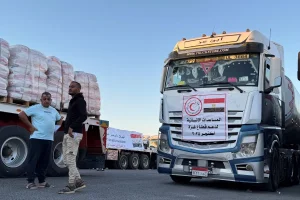
Trucks loaded with humanitarian aid on the Egyptian side of the Rafah crossing wait to cross into the Gaza Strip early on Wednesday, Oct. 15, 2025 (AFP / Getty Images)
On the air and in field reports, aid groups echo the same constraints: the ceasefire helps, but access, approvals, and corridors decide whether malnourished children actually eat. Democracy Now!’s on-the-ground interviews and Al Jazeera’s hospital reporting describe a gap between what’s entering and what reaches pediatric wards and nutrition clinics.
Open every crossing, every day, with predictable slots. Bayram’s point is operational, not rhetorical: famine response needs volume plus reliability. Put bluntly, Gaza won’t be fed by sporadic convoys. The twenty-point plan’s “full aid” promise should be interpreted as at least the earlier benchmarks (600 trucks/day) and prioritized toward the north — paired with deconfliction that actually holds on destroyed, UXO-laden roads.
Use the tools we already have—properly. UN Security Council Resolution 2720 created a coordinator and a UN2720 monitoring mechanism. Scale it: embed neutral monitors at all crossings, mandate full digital manifesting and QR tracking for consignments, and publish near-real-time dashboards of what clears, what’s diverted, and where trucks end up. Transparency reduces suspicion and speeds approvals.
Clear the way north. Fund rubble removal and EOD/UXO at humanitarian chokepoints first, then re-grade key corridors into Gaza City and beyond. Aid cannot outrun blocked roads. UN briefings already flag this as central to both body recovery and safe returns — extend that logic to food pipelines.
Fuel and bakeries before everything else. WFP’s plan to feed ~1.6 million people and scale supported bakeries from 10 to 30 is the fastest path to calories at scale. Guarantee fuel for mills, ovens, cold-chain, and hospital generators; fast-track spare parts and chlorine for water networks. Cash-based assistance (digital or vouchers) can complement in areas where markets function.
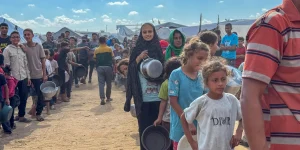
Stabilize health systems to prevent “famine deaths by disease.” Surges in measles, diarrheal disease, and respiratory infections are classic famine multipliers. That means: reopen cold-chain, push nutrition (SAM/MAM) commodities, and support mobile clinics able to work north. Without that, food alone won’t cut excess mortality.
Guarantee principled access for NRC, ICRC, UNRWA and partners. The ceasefire text and the 20-point plan reference “full aid” and neutral distribution via the UN and Red Crescent. Make it binding via written safe-passage windows, no-strike lists that stick, and zero interference with beneficiary selection or aid content. Then police it — with independent monitors and public logs.
Lock in political guardrails. No annexation, no forced displacement, no engineered scarcity. That’s not a talking point; it’s the minimum political oxygen a humanitarian recovery needs. The CFR guide to the plan and the deal text both point there — now it has to survive contact with reality.
If those pieces land — open crossings, scaled monitoring, cleared corridors, fuel/bakeries, health surge, and credible guardrails — the ceasefire can become more than a pause between disasters. If they don’t, we will simply be counting bodies more slowly.

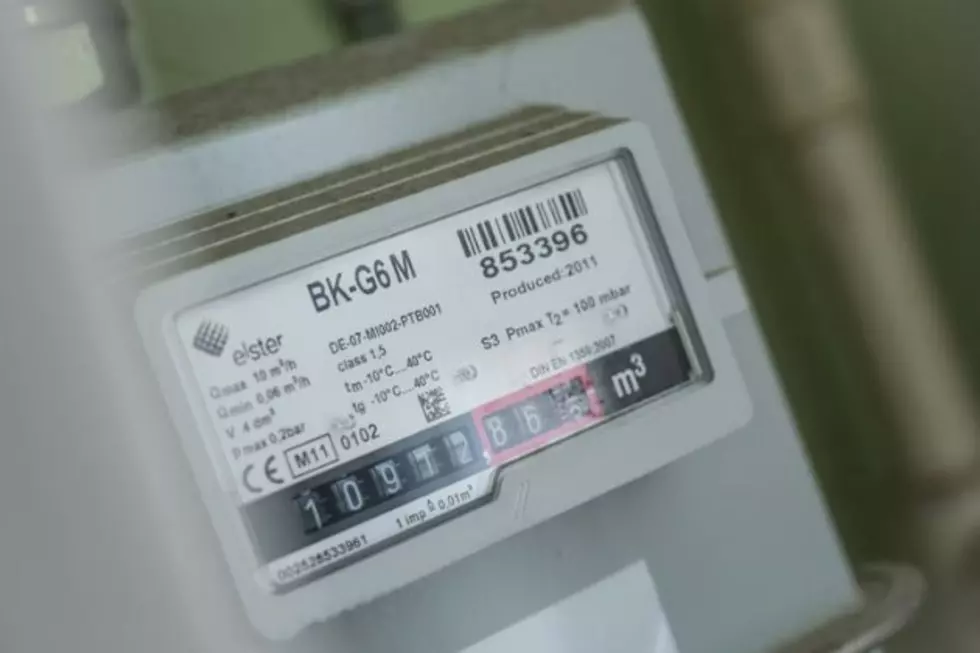
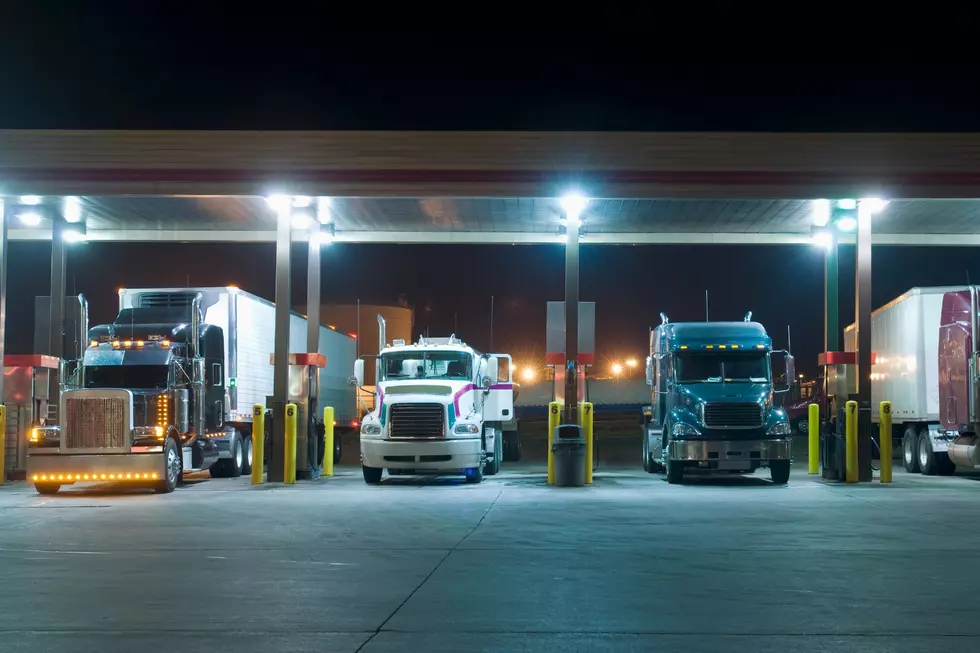
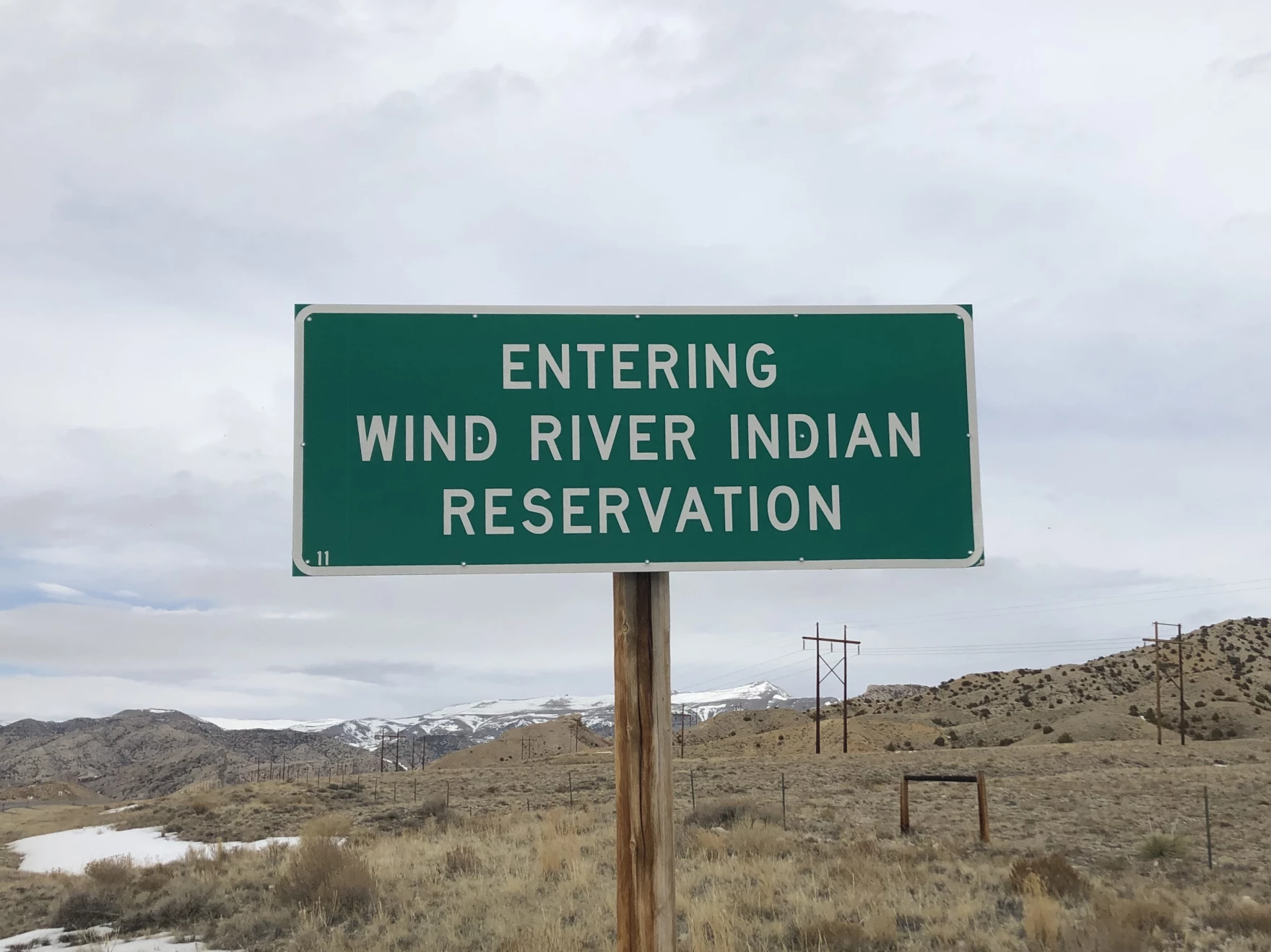
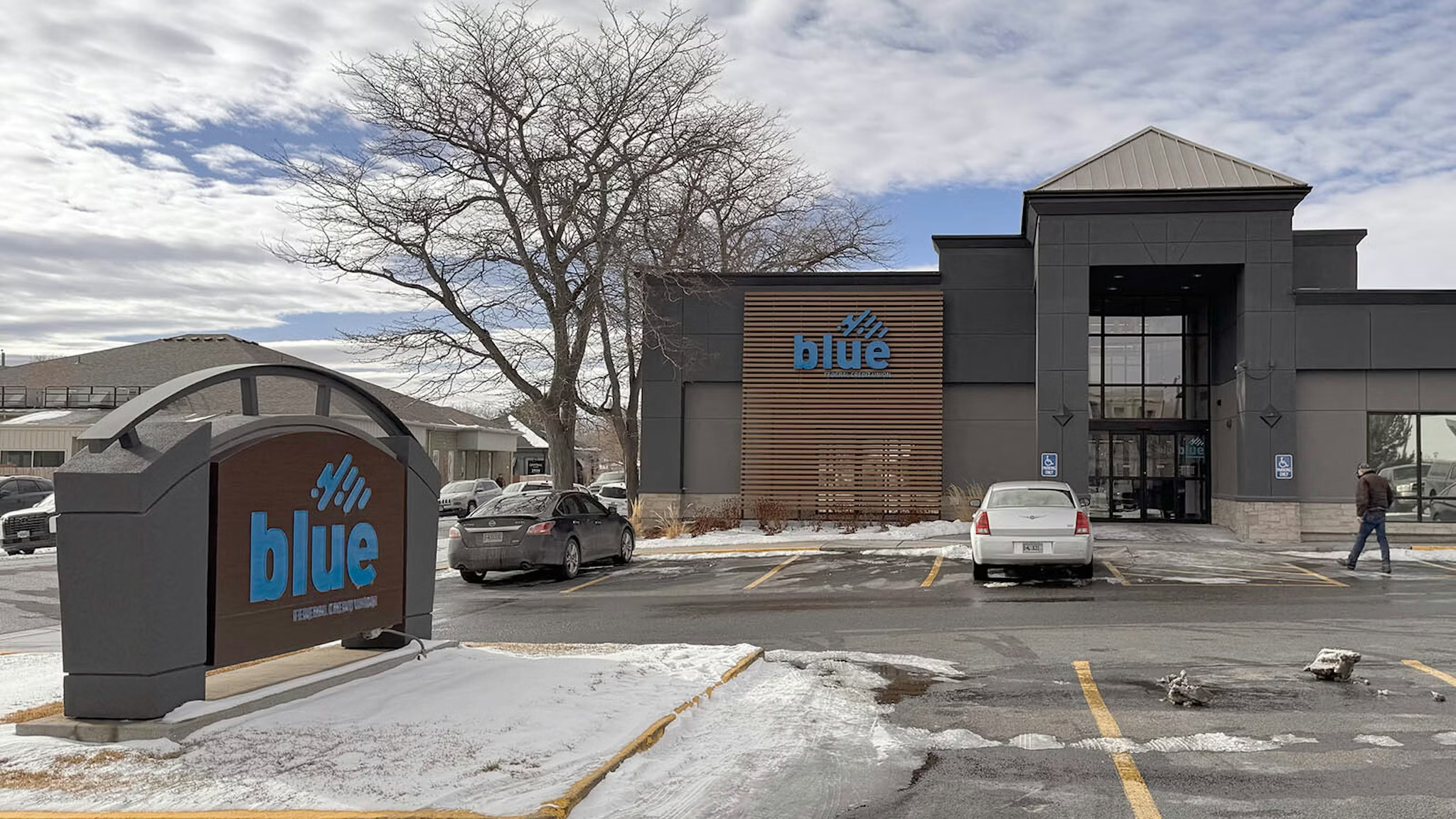
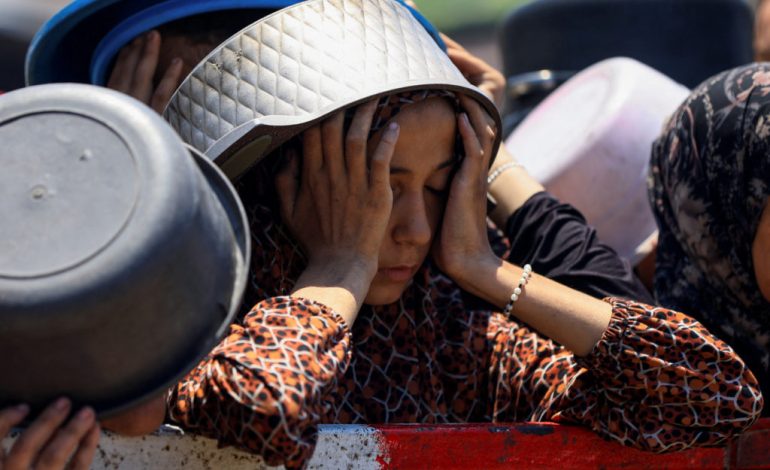



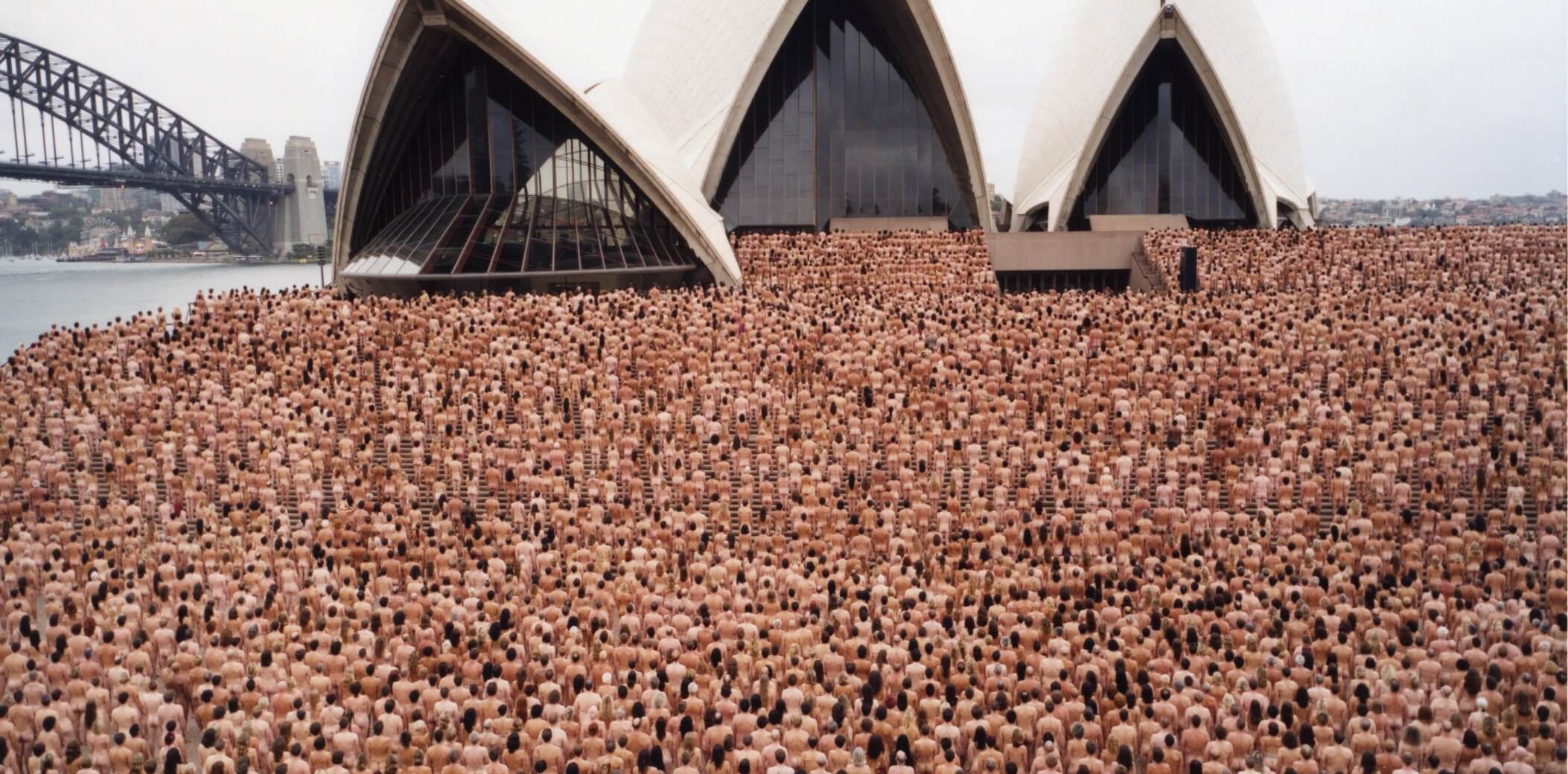
The latest news in your social feeds
Subscribe to our social media platforms to stay tuned